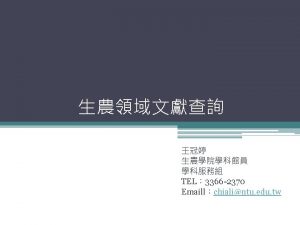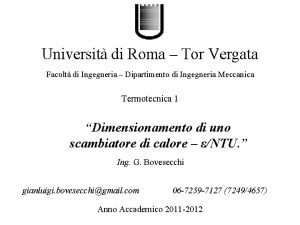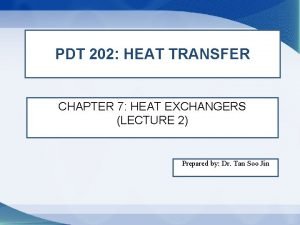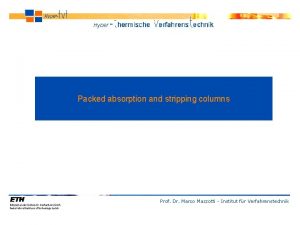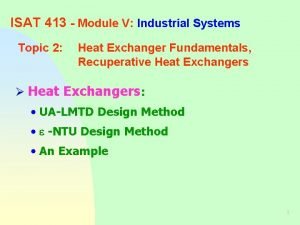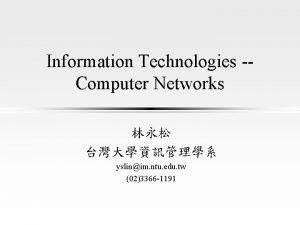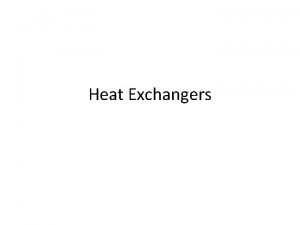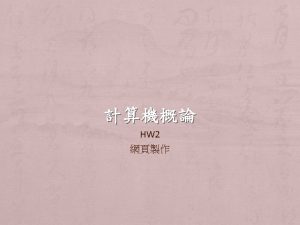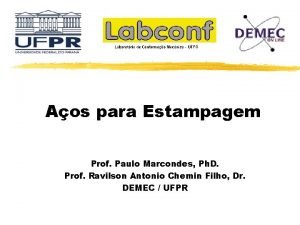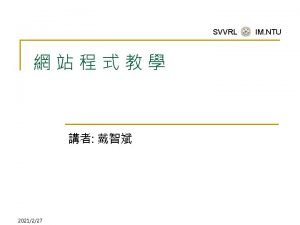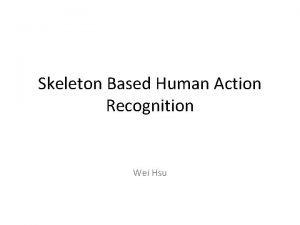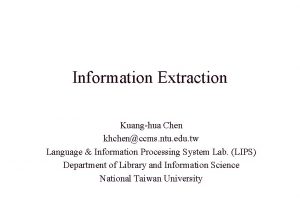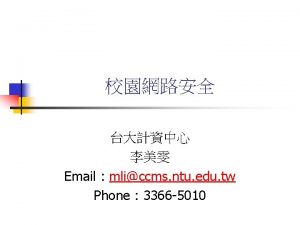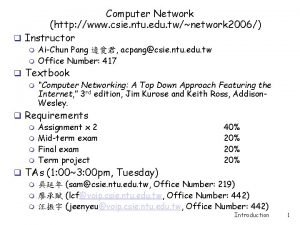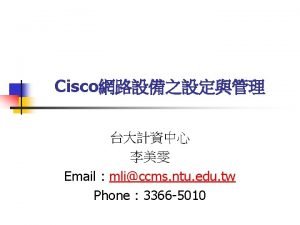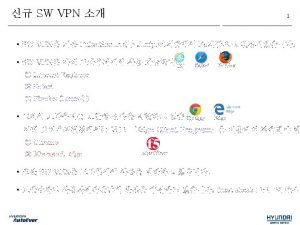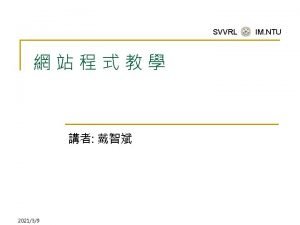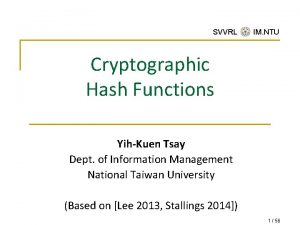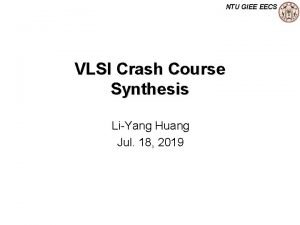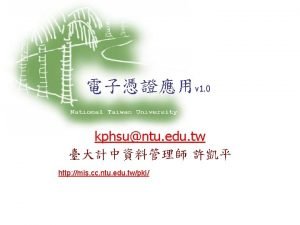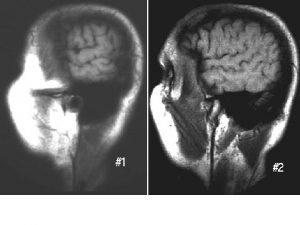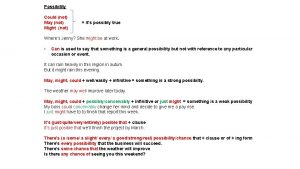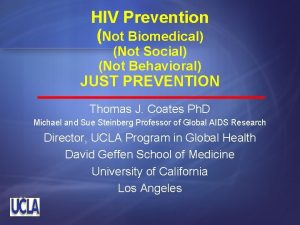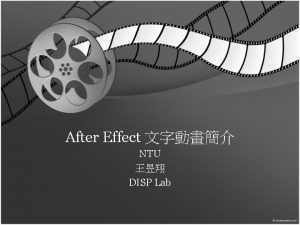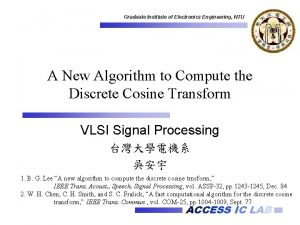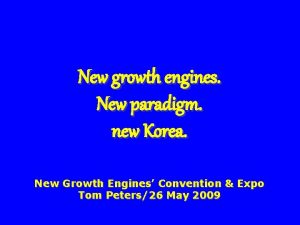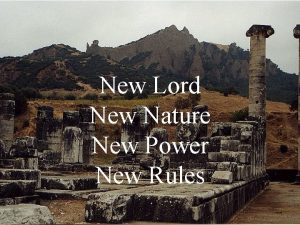When is an NTU not an NTU New


























- Slides: 26

When is an NTU not an NTU? New Reporting Procedures by USGS and ASTM Address Turbidity Data Comparability and Storage Issues by Chauncey Anderson and G. Douglas Glysson, US Geological Survey

Acknowledgements Funding from: USGS Office of Water Quality Major assistance from: Mike Sadar (Hach Corp. ) John Mc. Donald (YSI Environmental) Kemon Popacosta (GFS Chemicals, Inc. ) USGS- Andy Ziegler, Richard Wagner, Jim Eychaner, Mark Uhrich, Office of Surface Water

Take Home Messages There is no such thing as “The Correct Turbidity”! Consistency, Consistency! USGS & ASTM will report and store data with new reporting units based on instrument type (Oct. 1, 2004)

Outline 1. Problem / Definition 2. Measurement & Technology 3. Comparisons among instruments 4. USGS & ASTM response • • Reporting Units Data Storage

Problem: Large differences among instruments and users 500 (n = ~15) Turbidity 400 300 200 100 0 1 150 mg/L 0% Sand 2 600 mg/L 6 -7% Sand Blind Sample Lot 3 600 mg/L 20% Sand (Gray and Glysson, 2002)

Definition of Turbidity “…an expression of the optical properties of a liquid that causes light rays to be scattered and absorbed rather than transmitted in straight lines through a sample. ” (ASTM International, 2003 a) – Suspended material • clay, silt, finely divided organic matter, plankton, other microscopic organisms – Dissolved material • organic acids and dyes

Measurement BACKSCATTER DETECTOR (Optional) 90° DETECTOR (Required) Light Source (White Light Tungsten Filament or near-IR LED) Sample Cell FORWARD SCATTER DETECTOR (Optional) TRANSMITTED DETECTOR (Optional)

Technology • Single detector, white light (standard nephelometry) • Multiple detectors (ratiometry) • Near-IR nephelometry – Non-ratio (single detector) – Ratio (multiple detectors) • • Surface Scatter Backscatter Attenuation / Transmission Static (benchtop) vs Dynamic (submersible)

Effect of Color 70 60 50 40 White-light, ratio (Hach 2100 AN) 30 20 10 0 0 10 20 30 40 50 White Light, non-ratio (Hach 2100 A) 60 70 Data from Pavelich, NWQL

Effect of Light Source & Detectors 100 Analite 160 (near IR) Hach 2100 P (White Light, Ratio) Hach 2100 N (White Light, non-ratio) 80 Turbidity x= y 60 40 20 0 0 20 40 60 YSI 6026 (near IR) 80 100

New Reporting Units Light Wavelength Detector Geometry White or broad band (400 -680 nm) Near-IR or Monochrome (780 -900 nm) Single-Beam Light Source Single Detector Nephelometry (90°) NTU— Nephelometric Turbidity Unit FNU— Formazin Nephelometric Unit Multiple Detector Nephelometry (90° and other angles) NTRU— Nephelometric Turbidity Ratio Unit FNRU— Formazin Nephelometric Ratio Unit Single Detector Backscatter (30°) BU— Backscatter Unit FBU— Formazin Backscatter Unit Single Detector Attenuation (180°) AU— Attenuation Unit FAU— Formazin Attenuation Unit) Multiple-Beam Light Source Multiple Detector Nephelometry (90° and other angles) NTMU— Nephelometric Turbidity Multibeam Unit FNMU— Formazin Nephelometric Multibeam Unit

Remaining issues • New instruments continually being developed • Still have large variability within some categories • Databases • Education

Where to from here? • USGS National Field Manual Ch. 6. 7 (http: //water. usgs. gov/owq/Field. Manual) • USGS historical data won’t be migrated to new pcodes unless specific information on instrument is available. • FAQ • ASTM Round-Robin

Conclusions There is no such thing as “The Correct Turbidity”! Consistency, Consistency! USGS & ASTM will report and store data with new reporting units based on instrument type (Oct. 1, 2004)


Turbidity-- Considerations • Currently no federal regulations apply to natural waters • Turbidity isn’t an inherent physical property & is affected by many factors • Technological advances that account for these factors also reduce comparability • Techniques matter (static/dynamic, calibrants used)

Effect of Dilutions 3000 Turbidity 2500 2000 1500 Near IR (YSI 6026) 1000 500 Ratio Meter (Hach 2100 AN) 0 1 3 5 7 Site Number 9 11 13 15 Ratio Meter Diluted (Hach 2100 AN) 17

Effect of Particle Size and Density Upper Squaw Creek, 3 -Sisters Wilderness, Oregon, August 2003 600 Turbidity 500 White-light, Ratio (Hach 2100 P) 400 300 200 White-light, Non-ratio (Hach 2100 N) 100 0 1 2 3 Subsample # 4 5

Factors affecting turbidity Properties of Effect on Direction of water matrix Measurement effect Color Absorption of light beam Instrument designs to compensate • Near-IR Negative (-) • Multiple detectors Particle Size: • Large l – Dependent + (Near IR) - (White) • Small Particle Density • White Light • Near IR Increases • Multiple forward & back Negative (-) Detectors scattering • Backscatter

Factors affecting measurements • • • Particles Color Light source Number and configuration of detectors Particle settling Mechanical & Sample problems

Example - YSI Probes

80 Instrument Comparisons 70 60 50 40 30 11 : 0 0 13 : 0 0 15 : 0 0 17 : 0 0 19 : 0 0 21 : 0 0 23 : 0 0 1: 00 3: 00 5: 00 7: 00 9: 00 20 Near-IR, Dynamic Near IR, Static White Light, Ratio (static) White Light (Static)

Which Instrument Do I Use? • Based on Study Objectives • Decision Tree to help users decide which instrument type to use

Data Storage • USGS Database – New parameter codes for turbidity • Historical data will not be migrated without specific knowledge of instruments used – New method codes to designate each instrument (make, model, mode of op. )

Calibrants • Reference Solution – Scratch Formazin (4000 TU) • Calibration Solutions – Diluted scratch formazin or commercial standards (Stabl. Calä, AMCO AEPA-1ä polymers) • Verification Standards – Solids, gels

FAQ • • EPA Role/Response? What about FTU? Polymer vs Formazin? Why do some units contain “formazin” in name and some don’t? • Can USGS just do this w/o EPA? • What’s the best instrument to use?
 Sadlier vocabulary workshop level d unit 1
Sadlier vocabulary workshop level d unit 1 Ssl vpn ntu
Ssl vpn ntu Ntu scambiatore
Ntu scambiatore Effectiveness ntu method
Effectiveness ntu method Htu ntu
Htu ntu Student dashboard ntu
Student dashboard ntu Ntu heat transfer
Ntu heat transfer Ntu in networking
Ntu in networking Tubular heat exchanger
Tubular heat exchanger Ntu google map
Ntu google map Marginal fail ntu
Marginal fail ntu Aço ntu-qc-250
Aço ntu-qc-250 Ntu 軟體
Ntu 軟體 Ntu col
Ntu col Ntu-rgbd
Ntu-rgbd Ntu lis
Ntu lis Ntu.edu.ua:9095
Ntu.edu.ua:9095 Csie.ntu
Csie.ntu Ntu cisco
Ntu cisco Eportfolio ntu
Eportfolio ntu Vpn hyundai
Vpn hyundai Ntu ie
Ntu ie Sha 3
Sha 3 Cati lab ntu
Cati lab ntu Ntu giee
Ntu giee Ntu bioengineering
Ntu bioengineering Belgrave ntu
Belgrave ntu

